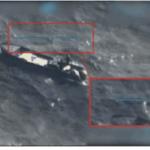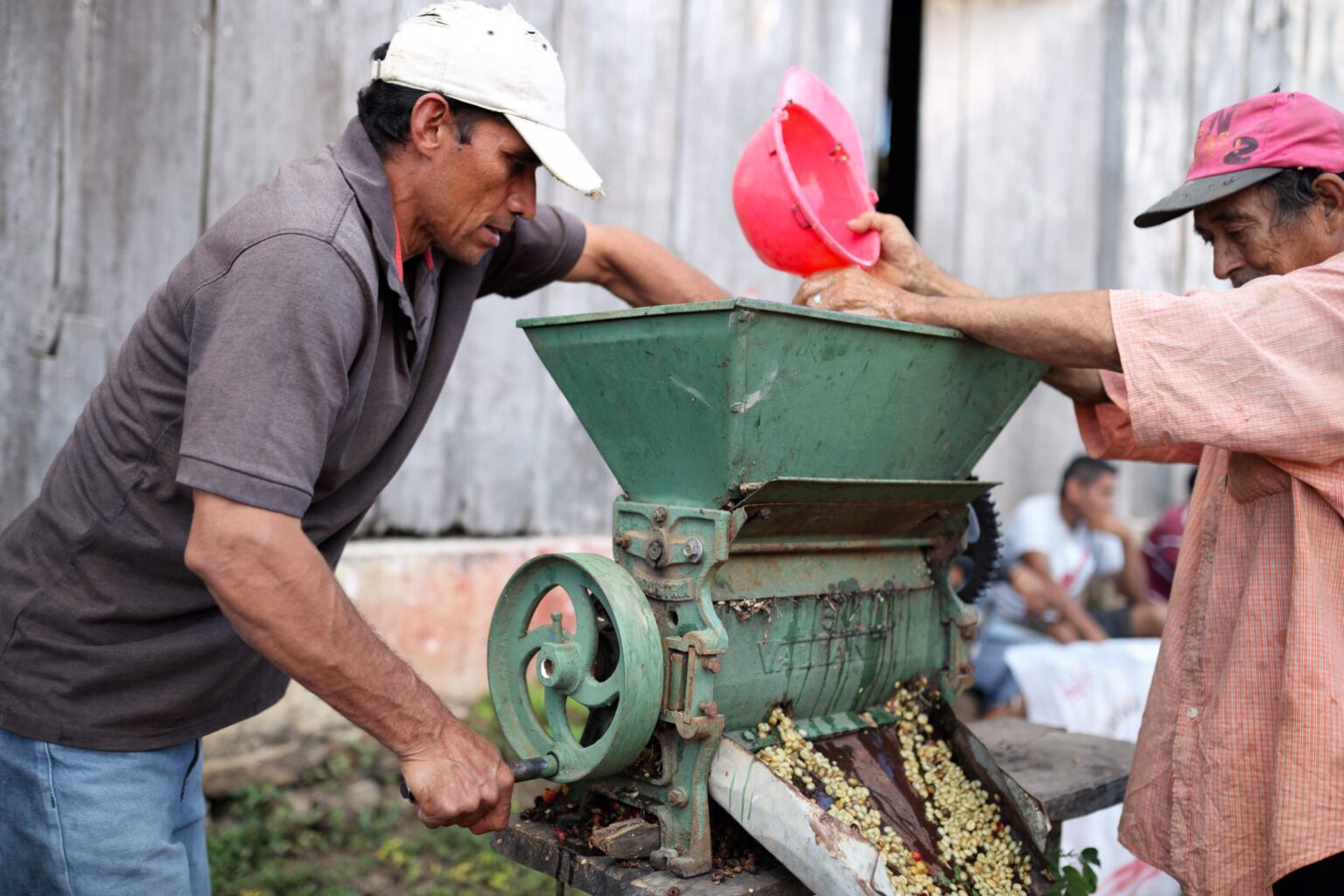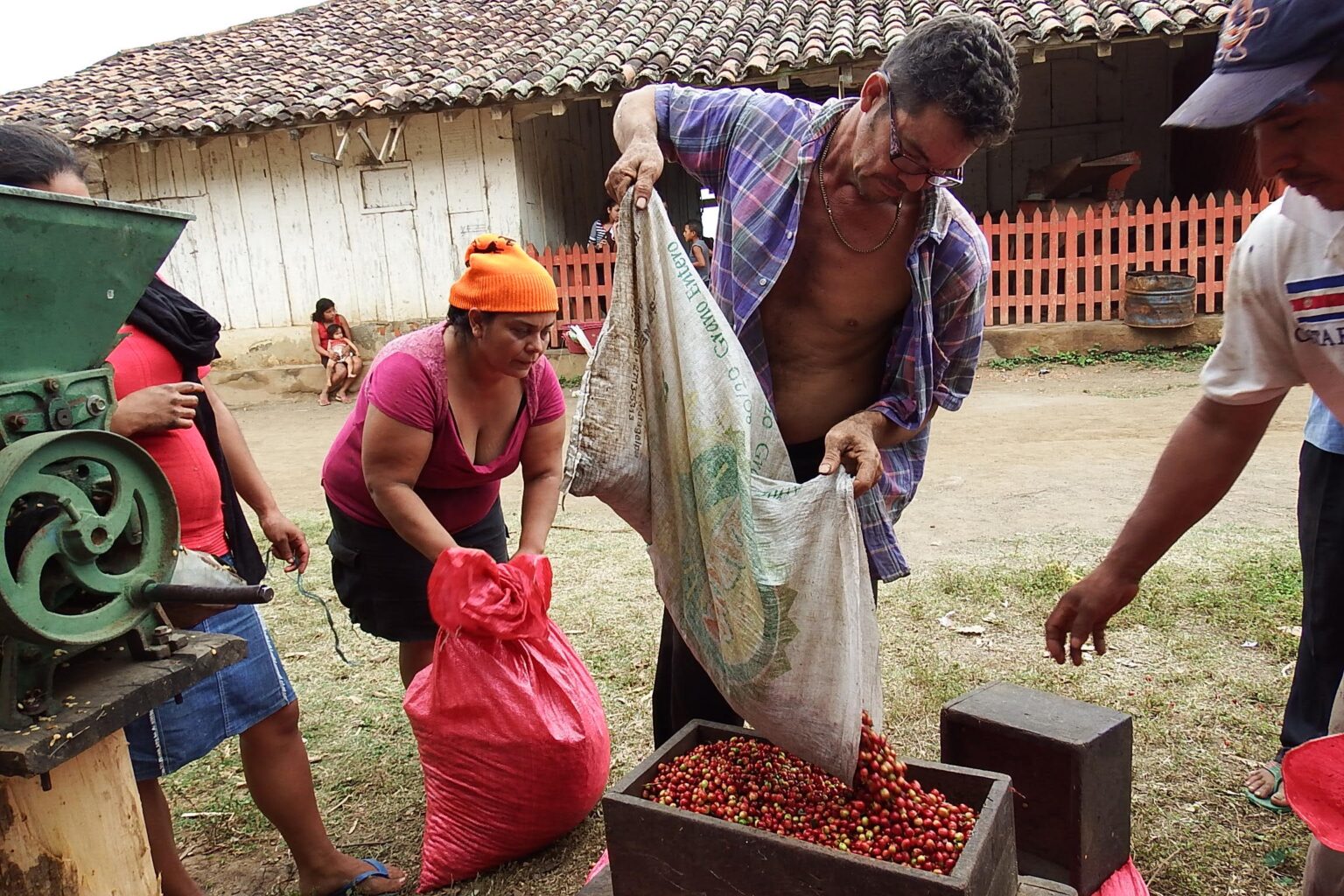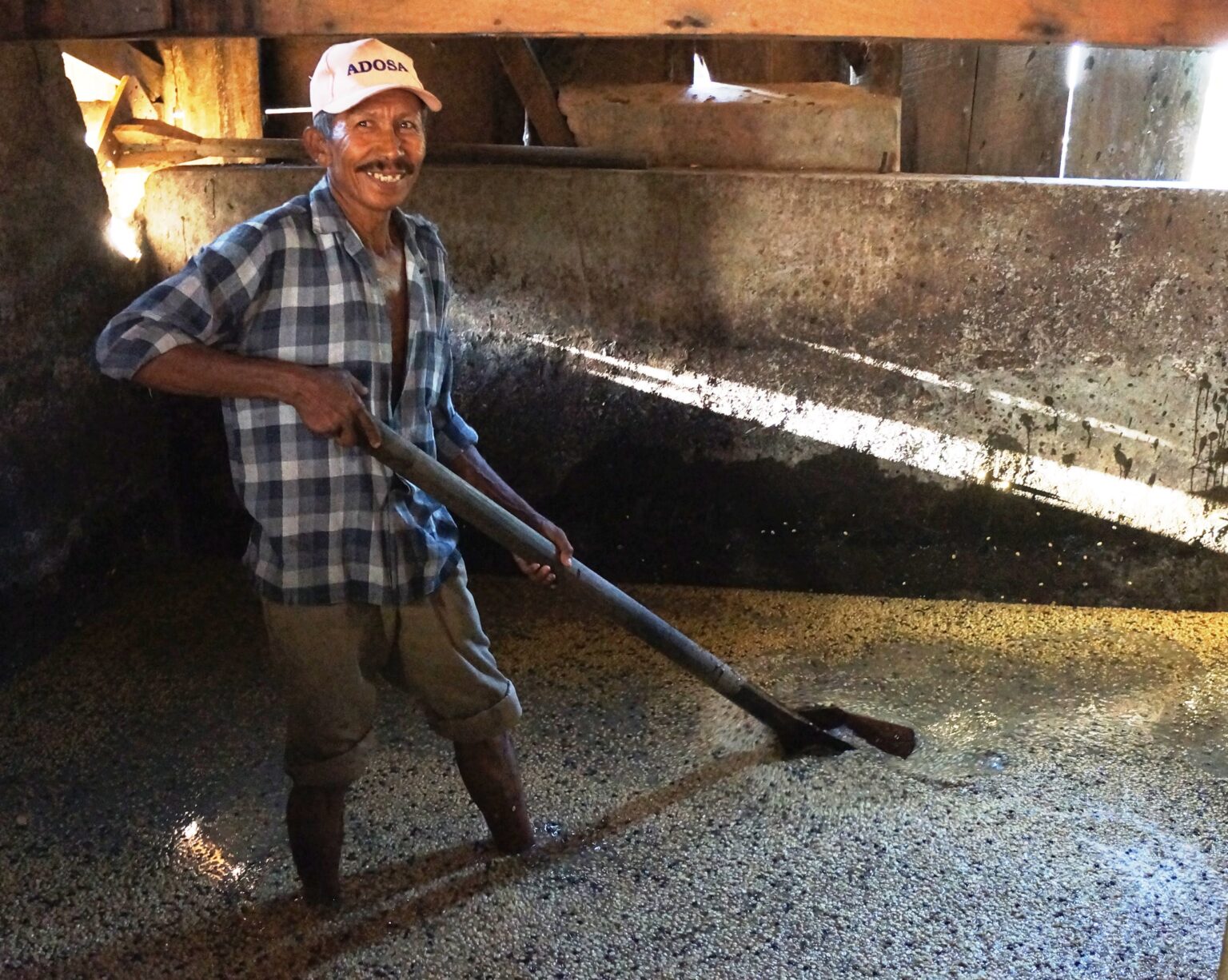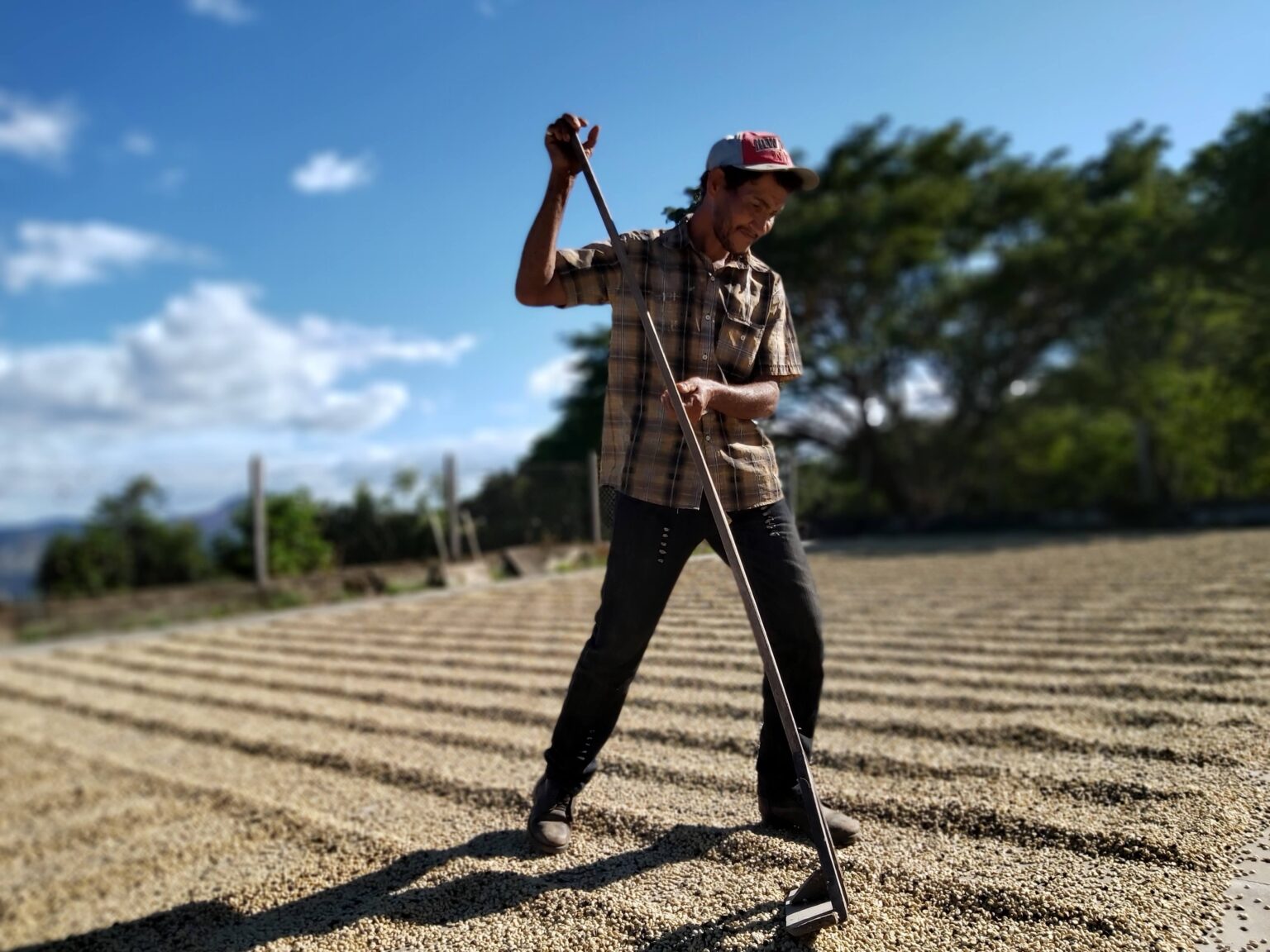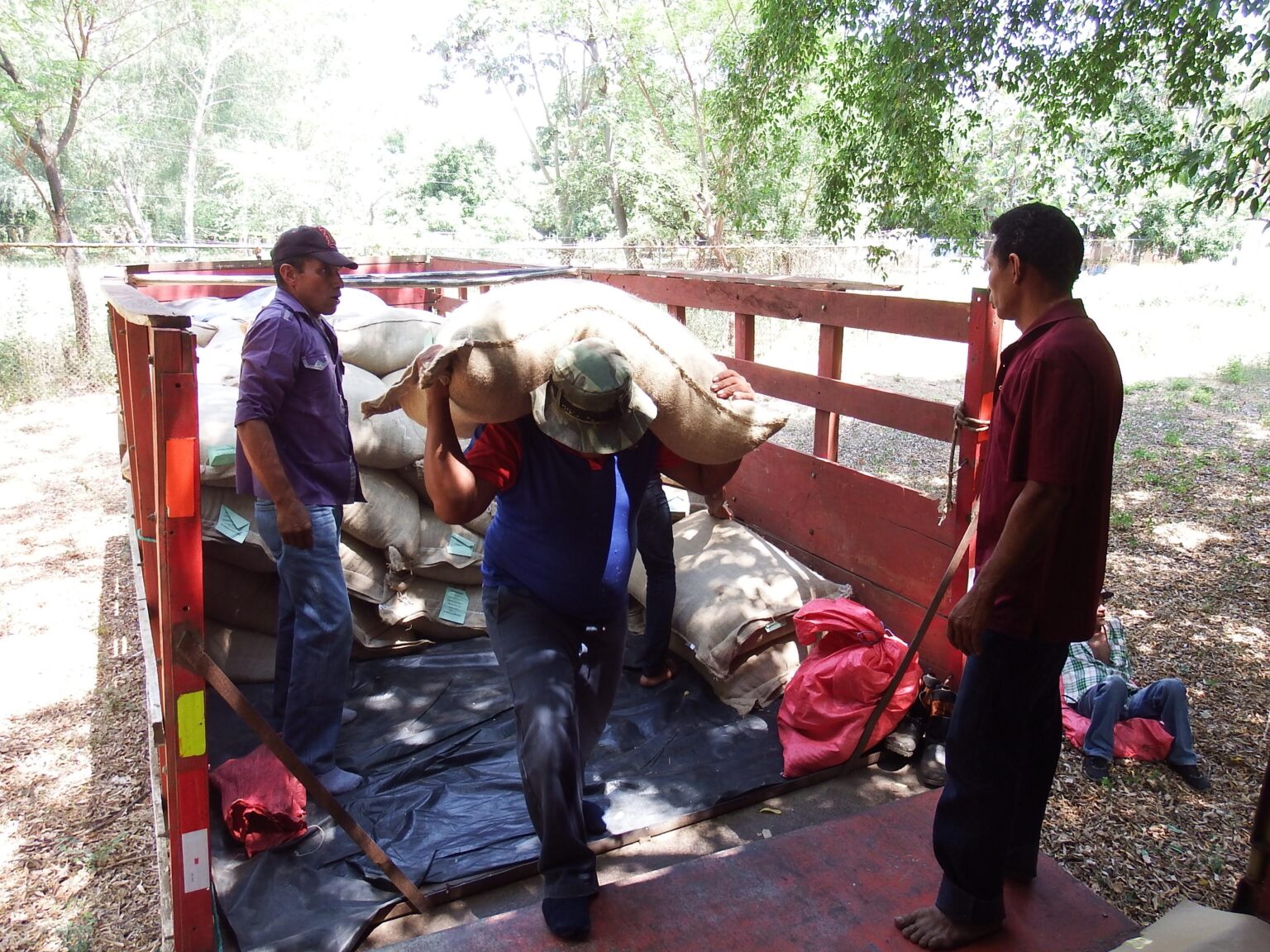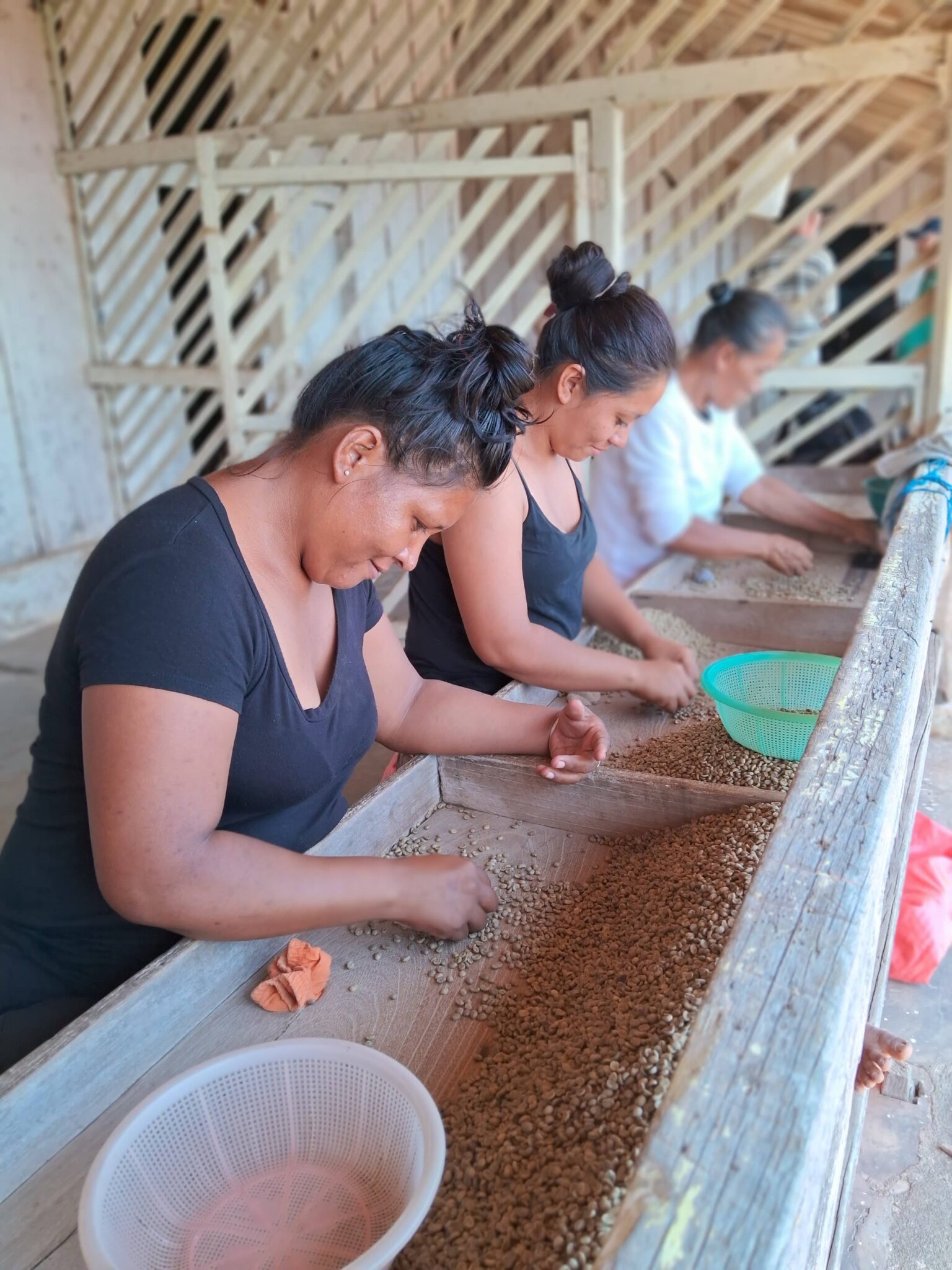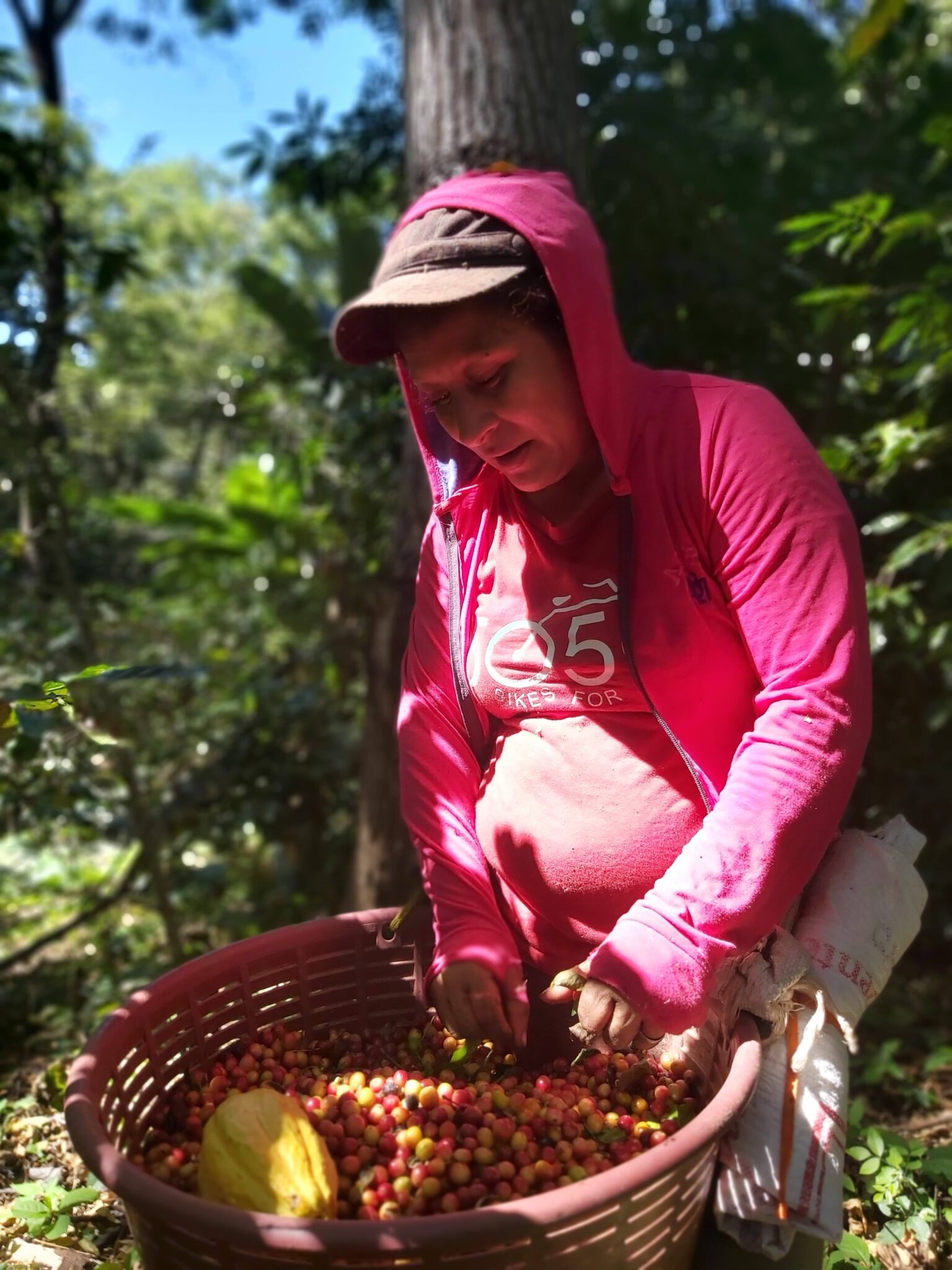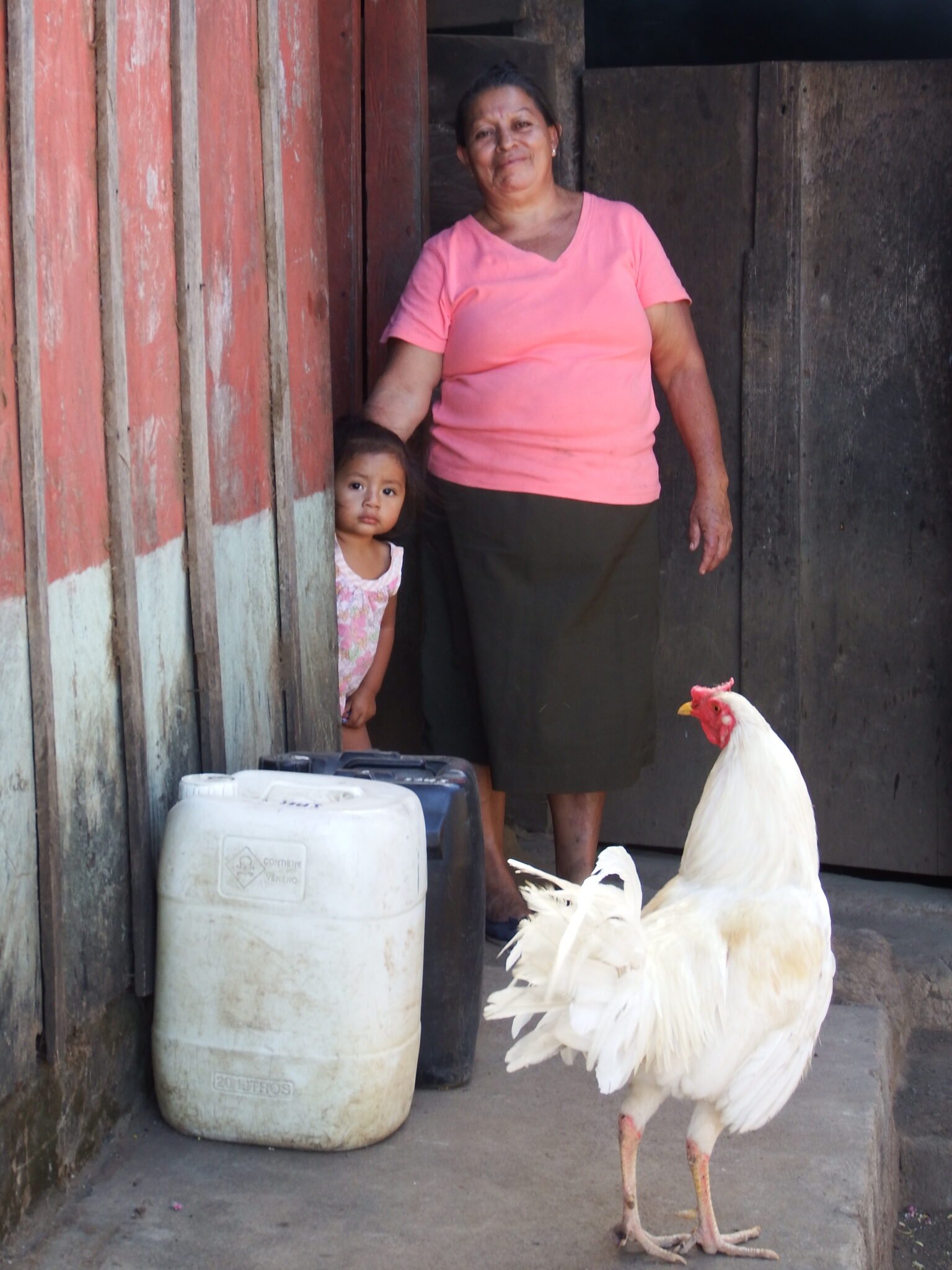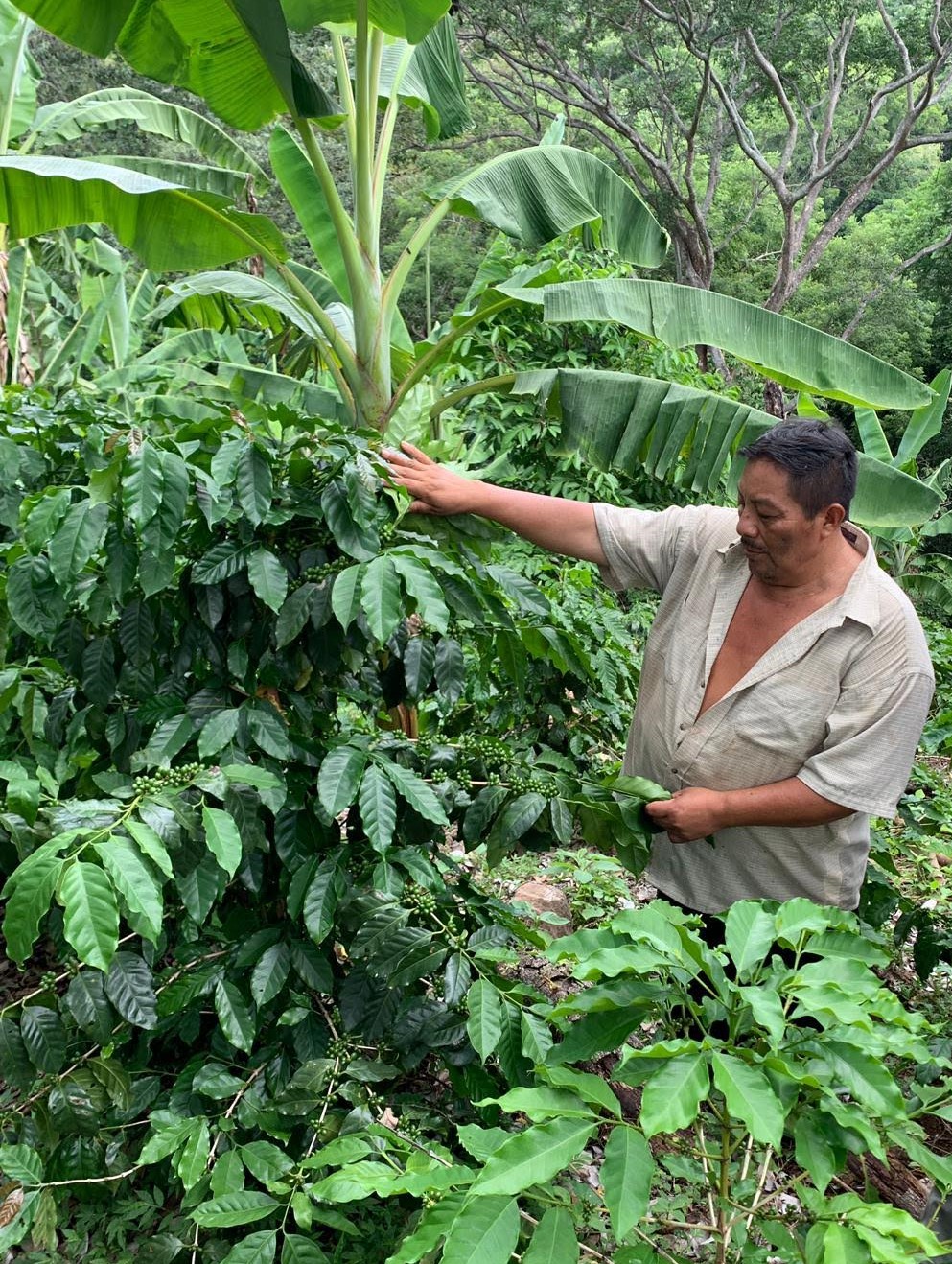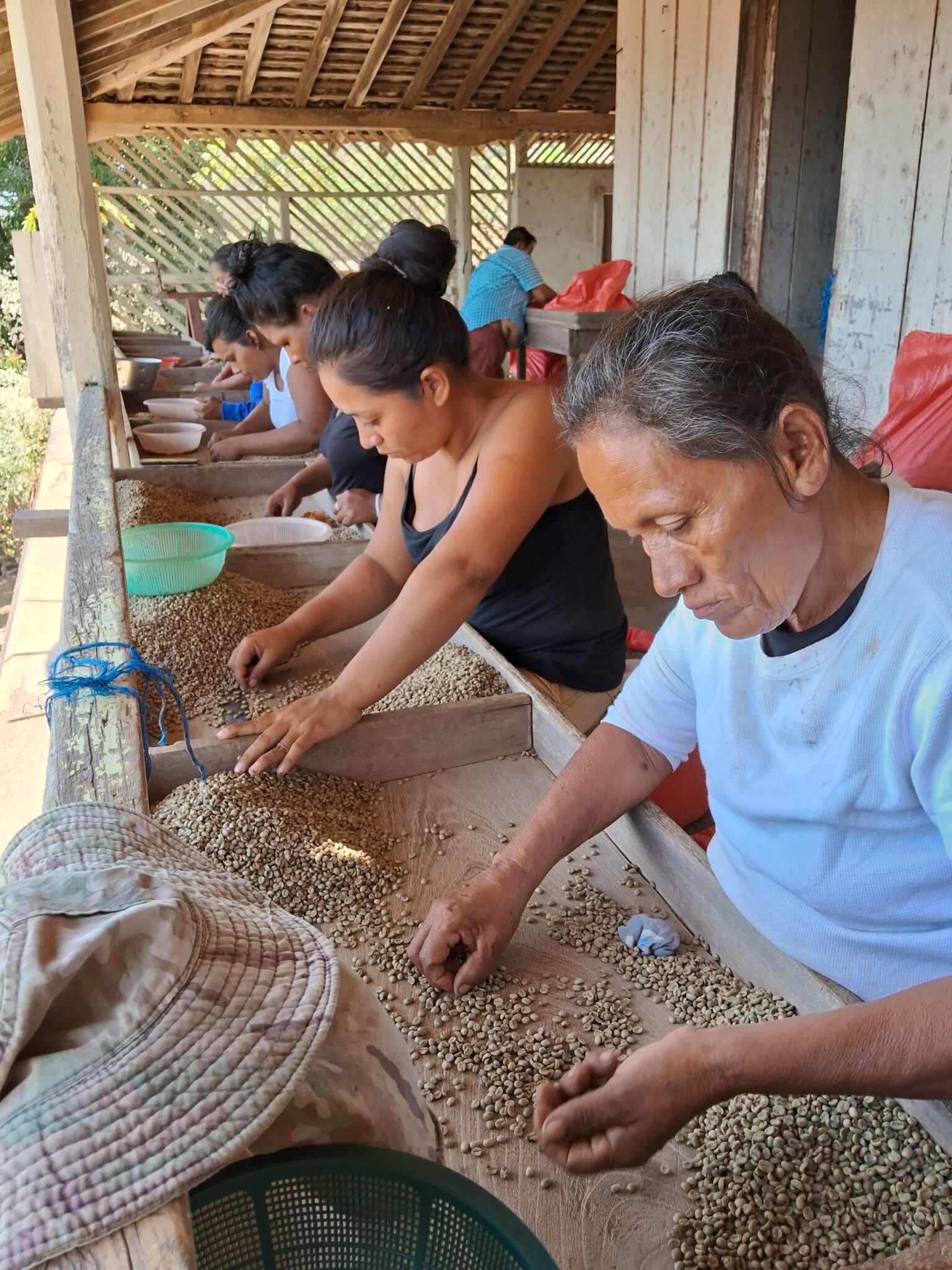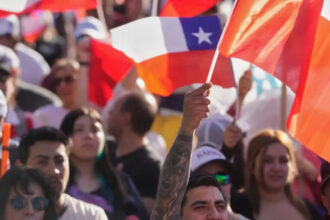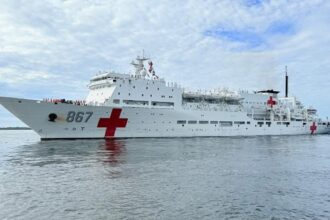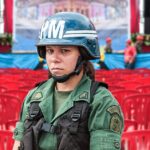“We were already struggling with 18% tariffs this year, I don’t know how we could export our coffee under 100% tariffs,” René Gaitan tells me as we watch the clouds clear out over a breathtaking expanse of Nicaraguan landscape. The view from the El Porvenir worker-owned coffee cooperative stretches from Lake Managua up toward the Honduran border, dominated by the smoking crater of the Telica volcano. Gaitán is the vice president of the 51-family cooperative.
The co-op is remote; its members hike eight kilometers to get the bus to the city of León, a three-hour ride away. But the news on 20 October that the U.S. may impose 100% tariffs on the Central American nation reached the co-op with the lightning speed of the internet on Gaitan’s smart phone, charged by solar panels.
A U.S. Trade Representative’s office (USTR) report alleges that the Nicaraguan government violates labor regulations, including “allowing use of child and forced labor, human trafficking, repression of freedom of association and collective bargaining.” Washington is using these allegations to threaten punitive measures, including 100% tariffs on goods imported from Nicaragua and suspension of all benefits for Nicaragua from the Dominican Republic–Central America Free Trade Agreement (CAFTA-DR).
The USTR report’s allegations are opaque: most are cut and pasted from reports by the U.S. State Department and U.S. Department of Labor, which do not cite their sources, or from paid mouthpieces such as Manuel Orozco and Expediente Abierto. The report fails to produce evidence of the Nicaraguan government’s complacency in child or forced labor, describes chartered flights of migrants being allowed into the country on the $10 tourist visas granted to all visitors as “human trafficking,” and conflates industry trade associations with unions when describing “union arrests.” Those arrested in the description were not in fact union leaders, but instead two leaders of a business owners lobbying group who were arrested for acts of treason including requesting military interventions and planning terrorist acts with financing from foreign powers.
Although U.S. government sources cited in the USTR report claim that the Nicaraguan government does not adequately track and publish information, the Sandinista government’s own publicly available annual reports clearly show a track record of improvements in the area of labor rights since coming back into power in 2007.
According to the Nicaraguan Ministry of Labor, between January 2007 and December 2023, Nicaragua increased child labor inspections by 4600%, and 70,452 companies signed commitments to no child labor and to respect the rights of adolescent workers. During that same period, 1,636 new unions were formed, making the total number of workers now affiliated in unions 1.2 million, or 38% of Nicaragua’s total labor force. There was a 300% increase in workplace labor inspections and 138,374 women who were working for less than minimum wage had their salaries raised to the minimum. In total, the government accompanied workers in filing successful claims against their employers that resulted in $8.8 million in claims for workers. There have been 3,010 sessions carried out of tripartite labor negotiations among government, business and unions, and the minimum wage has increased 550% over 17 years.
U.S. wants Nicaragua out of CAFTA-DR
With so many measurable advances in Nicaragua, why is the U.S. now grasping at straws to claim the country violates labor laws?
For some time, the U.S. has been engaged in hybrid warfare against the revolutionary governments of Venezuela, Nicaragua and Cuba. To date, U.S. sanctions against Nicaragua are more limited than in the other two countries, in part because Nicaragua’s participation in CAFTA-DR makes imposing unilateral trade sanctions more complicated. In fact, the legality of the 18% tariff imposed on Nicaraguan goods earlier this year is questionable under CAFTA-DR rules.
While the U.S. freezes assets of Nicaraguan officials, imposes visa bans, and restricts U.S. citizens from doing business with certain Nicaraguan entities, they cannot impose full trade sanctions without the approval of the other five countries. To exclude Nicaragua completely from CAFTA-DR would require the agreement of all its member countries, which is unlikely to happen.
As the U.S. amps up its attacks against Venezuela, Nicaragua and Cuba, it is anxious to further pressure Nicaragua and isolate it from its neighboring Central American countries. In order to achieve this, the U.S. hopes to sidestep the lengthy bureaucratic processes of CAFTA-DR and justify immediate action against Nicaragua with these trumped-up accusations of labor rights violations.
CAFTA-DR designed to benefit big business
The USTR threats have Nicaraguan cooperatives like El Porvenir worried. Coffee, Nicaragua’s largest export, supports 52,000 families and provides 500,000 jobs in the country. Under CAFTA-DR, even small producers have been able to export their products — including coffee, dairy, meat and beans — duty-free to the U.S.
The 20-year-old CAFTA-DR was not initially designed to benefit small farmers or cooperatives. Like the earlier North American Free Trade Agreement (NAFTA) with Mexico, CAFTA-DR was written to disproportionately benefit large U.S. businesses and was effectively imposed on the southern countries by the U.S.
Nicaragua ratified the free trade agreement in 2005 under the U.S.-client government of then-President Enrique Bolaños in a legislature controlled by his Constitutionalist Liberal Party. Elected representatives of the Frente Sandinista de Liberación Nacional (FSLN) party, many of whom were union leaders, cast 37 of the 38 votes against ratifying the trade agreement.
However, FSLN lawmakers worked to pass complementary implementation legislation for CAFTA-DR in Nicaragua, which ensured that small producers and cooperatives would also have access to the benefits, not just big business.
Nicaragua beat the U.S. at its own game
While CAFTA-DR has modestly increased Nicaragua’s trade flows, those who benefited most are small producers who have been able to leverage the free trade agreement to access long-term purchasing agreements in direct partnership with U.S. markets. This has allowed farmers to negotiate a credit component into contracts to invest in adding value to their product. By purchasing machinery to process and package their own product, farmers and co-ops can cut out intermediaries, leaving more profits in the pockets of producers.
The FSLN returned to power in Nicaragua in 2007, shortly after CAFTA-DR went into effect.Combined with CAFTA-DR benefits, its efforts have turned small-scale production around in the country. The Sandinista government designed its national development plan with poverty reduction at its center, and rolled out programs based on a trickle-up economic philosophy that focused on strengthening rural and creative economies with micro and small businesses and co-ops. Over 18 years, the country has worked to improve stability, quality and profit margins for those at the bottom of the production chain including training 95,000 farmers annually in value added products, building 800 new centers of crop collection and processing for coffee and cacao, and financing 19 agro-industrial processing centers.
Nicaragua’s resiliency strategy
In an ironic twist, U.S. consumers and corporations are likely to be the biggest losers in a trade war against Nicaragua. In a statement, the National Council of Textile Organizations pointed out that Nicaragua forms part of a $1.1 billion integrated supply chain: textiles assembled in Nicaragua use components from other CAFTA-DR countries with goods traveling up and down the isthmus to make apparel for the U.S. market. It warned that “destabilizing the U.S.-CAFTA-DR production platform would have serious implications for U.S. and regional workers, migration, economic development, and pending and future investment.”
While U.S. companies in Nicaragua rely on U.S. markets, Nicaraguan companies are poised to pivot to other markets. Over the past 18 years, Nicaragua has embraced a strategy of diversifying markets and as a result, the country is no longer dependent solely on the U.S. for selling its products. For example, in recent years, Panama has surpassed the U.S. as the leading investor in the country, and Nicaragua’s free trade agreement with China led to a 218.3 % increase in exports to China in its first year of implementation in 2024.
While René Gaitan and I are discussing strategies for selling El Porvenir coffee without being subject to 100% tariffs, 130 km away in the Waswalí, Nicaraguan Co-Minister of Foreign Affairs Valrack Jaentschke was speaking at the opening of the coffee harvest. In his remarks, Jaentschke noted that the U.S. is not the only market for coffee — this year, Nicaragua’s $1.3-billion coffee harvest will be exported to 55 different countries. He also addressed the punitive trade measures threatened by the U.S:
The world has also been shaken by new – and old! – forms of imposition in international trade and politics…. A type of threat is emerging – or re-emerging, some would say – which respects nothing and no one in its eagerness to dismantle the international system that nations have been building over the last 80 years….
The Nicaraguan people, who have faced throughout our history all kinds of difficulties, invasions, climate impacts, and political threats, have always been able to face them successfully, trusting in our own strengths and in the unity of our people.
In the midst of so much insecurity, one thing is certain: Nicaragua’s diplomacy, economic policies and unwavering focus on poverty reduction have created a national resiliency that will allow the country to outmaneuver U.S. machinations once again.





